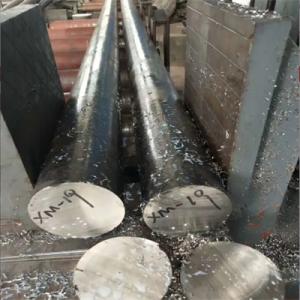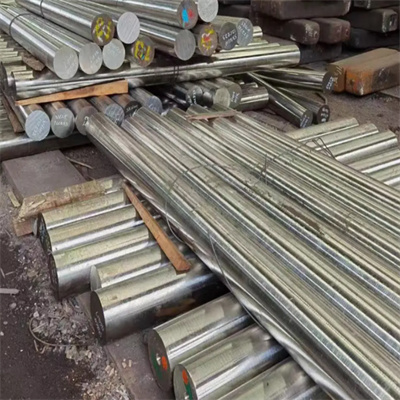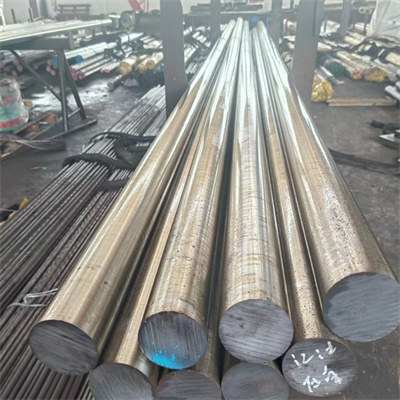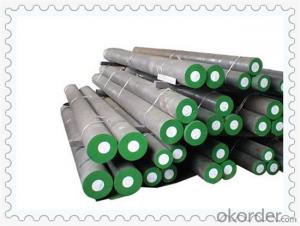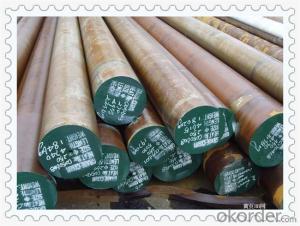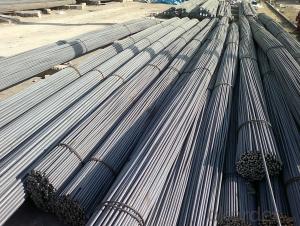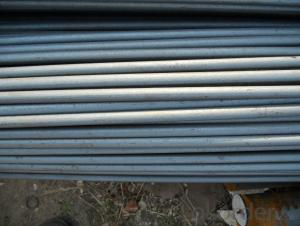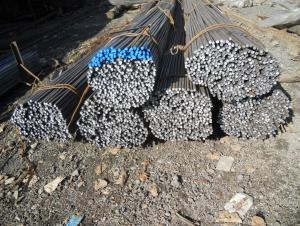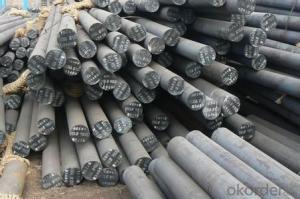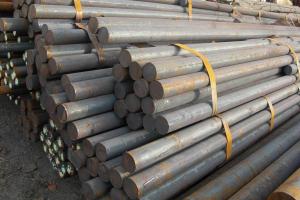Corrosion resistance of Super13cr stainless steel round steel for drilling tools
- Loading Port:
- XINGANG
- Payment Terms:
- TT OR LC
- Min Order Qty:
- 1 kg
- Supply Capability:
- 1000 kg/month
OKorder Service Pledge
OKorder Financial Service
You Might Also Like
Specification
Corrosion resistance of Super13cr stainless steel round steel for drilling tools
Super13Cr is a martensitic stainless steel with good corrosion resistance and excellent strength, mainly used in offshore oil projects, OTG pipelines, casings, and underground projects. It is a super stainless steel that improves its strength and hardness, as well as toughness, by reducing the carbon content (carbon content is 0.03%) and increasing the nickel content (4.5-5.5%) and molybdenum content (1.5-2.5%). This material overcomes the shortcomings of traditional martensite such as poor stress crack sensitivity and poor weldability during welding, and therefore has higher corrosion resistance and better welding performance. Super13Cr has a wide range of applications, including but not limited to automotive, metal products, precision electronics, mechanical manufacturing, pressure vessels, chemical equipment, etc.
Stainless steel round steel belongs to the category of long materials and also to the category of rods. The so-called stainless steel round steel refers to long materials with a uniform circular cross-section, generally about four meters long. It can be divided into light circles and black bars. The so-called light circle refers to a smooth surface that has undergone quasi rolling treatment; The so-called black rod refers to a surface that is black and coarse, directly hot-rolled.
Stainless steel round steel has the following characteristics:
1. Corrosion resistance: Stainless steel round steel can resist rusting and corrosion in media such as atmosphere, water, acid, and alkali, and has good corrosion resistance. It can maintain surface brightness and color change.
2. High temperature resistance: Stainless steel round steel can still maintain good stability in high temperature environments, without deformation, softening, or cracking, and can be used in high-temperature situations.
3. High strength: Stainless steel round steel has a compact and strong structure, excellent mechanical properties, and can be used under harsh conditions such as high strength and high pressure.
4. Convenient processing: Stainless steel round steel can be processed in various ways, such as welding, cutting, drilling, punching, etc. It can be customized according to actual needs.
Buyer Reading
All products in our store are photographed from real objects, with slight color differences in the pictures. For any product issues, please contact our merchant's after-sales service for assistance! The prices of our products are for reference only. There are many models in different series and prices may vary. Please consult the merchant before placing an order.
Products need to be customized in advance (such as non-standard production and processing). Please consult the merchant before placing an order to see if there is stock available. If customization is required, please confirm the order deadline (to avoid delaying your urgent needs).
- Q: What are the corrosion resistance properties of steel round bars?
- Due to the presence of alloying elements like chromium, nickel, and molybdenum, steel round bars possess exceptional corrosion resistance. These elements combine to form a protective oxide layer on the steel's surface, effectively preventing contact with corrosive substances. By reacting with oxygen in the air, chromium in steel round bars forms a thin, unnoticeable layer of chromium oxide. This layer plays the role of a barrier, shielding the steel from further oxidation and corrosion. Additionally, nickel and molybdenum enhance the corrosion resistance of steel by increasing its ability to withstand pitting, crevice corrosion, and chloride-induced stress corrosion cracking. Apart from alloying elements, the manufacturing process can also impact the corrosion resistance of steel round bars. For example, stainless steel round bars are frequently subjected to passivation, a process that eliminates free iron and other contaminants from the surface. Passivation contributes to the steel's corrosion resistance by creating a clean and inert surface that is less susceptible to corrosion. In conclusion, steel round bars are renowned for their remarkable corrosion resistance, which makes them well-suited for a wide array of applications across various industries, including construction, marine, automotive, and aerospace.
- Q: What is the standard length of a steel round bar?
- The standard length of a steel round bar can vary depending on the specific industry and its intended use. However, in general, the standard length of a steel round bar is typically 20 feet or 6 meters. This length is commonly used in construction, manufacturing, and engineering applications. It is important to note that custom lengths can also be obtained, as per the requirements of a particular project or application.
- Q: Can steel round bars be used for making connecting rods?
- Yes, steel round bars can be used for making connecting rods. Connecting rods are vital components in internal combustion engines, and they require high strength and durability to withstand the forces and stresses involved in the engine's operation. Steel round bars, typically made from alloy steel, have excellent mechanical properties such as high tensile strength, hardness, and fatigue resistance, making them suitable for this application. Furthermore, steel round bars can be easily machined and shaped into the desired dimensions and specifications required for connecting rods. Therefore, using steel round bars is a common and reliable choice for manufacturing connecting rods in the automotive and other industries.
- Q: How are steel round bars used in the construction of railways?
- The durability and strength of steel round bars make them a common choice for constructing railways. These bars are typically made of high-quality steel, which allows them to resist wear and tear caused by heavy loads and constant use. In the construction of railways, steel round bars are primarily used to reinforce the concrete sleepers or ties that support the tracks. They are often installed as reinforcement rods within these sleepers, providing extra strength and stability to enhance the overall structural integrity of the railway system. Steel round bars are also utilized in the construction of railway bridges and tunnels. They are used to reinforce the concrete structures, ensuring that they can withstand the weight of passing trains and other loads. Moreover, steel round bars are employed in the fabrication of various railway components, including rail fastenings, switch points, and signaling equipment. These bars are shaped and sized to meet the specific requirements of these components. The high strength and flexibility of steel round bars make them ideal for these applications, as they can withstand the forces and stresses exerted on the railway infrastructure. To summarize, steel round bars are crucial in the construction of railways as they provide reinforcement, strength, and stability to different components and structures. Their durability and reliability make them essential materials in ensuring the safety and longevity of railway systems.
- Q: Can steel round bars be used in the telecommunications industry?
- Yes, steel round bars can be used in the telecommunications industry. Steel round bars are commonly used to provide structural support for various telecommunications equipment such as antennas, satellite dishes, and communication towers. These bars are highly durable and can withstand harsh weather conditions, making them suitable for outdoor installations. Additionally, steel round bars can be easily fabricated and shaped to meet specific design requirements, allowing for the integration of various components in the telecommunications infrastructure.
- Q: Can steel round bars be plated?
- Indeed, it is possible to plate steel round bars. Plating, a widely employed technique, serves to augment the aesthetics and safeguard the surface of the bars. The choice of plating material, be it chrome, nickel, or zinc, hinges upon the desired outcome and intended usage of the steel bars. Through plating, one can achieve heightened resistance to corrosion, improved hardness or wear resistance, as well as an appealing final touch. It is imperative to underscore the significance of adequately preparing and cleansing the steel surface prior to plating, as this guarantees a robust and top-notch plated finish.
- Q: What are the different types of steel round bar surface finishes for improved cleanliness?
- There are several types of steel round bar surface finishes that can be used to improve cleanliness. 1. Bright Surface Finish: This is achieved by polishing the steel round bar, resulting in a smooth and reflective surface. Bright surface finishes are commonly used in applications where cleanliness and appearance are important, such as in the manufacturing of kitchen appliances or decorative items. 2. Satin Finish: This finish is achieved by brushing the steel round bar with fine abrasive pads, resulting in a smooth and matte surface. Satin finishes are often used in applications where a clean and modern aesthetic is desired, such as in architectural designs or furniture manufacturing. 3. Pickled Finish: This finish involves immersing the steel round bar in an acid solution, which removes any impurities or oxides from the surface. Pickled finishes are commonly used in applications where the steel round bar will be further processed, such as in the production of pipes or tubes. 4. Passivated Finish: This finish involves treating the steel round bar with a chemical solution, which forms a protective oxide layer on the surface. Passivated finishes are used to enhance the corrosion resistance of the steel round bar, making it suitable for applications in harsh or corrosive environments. 5. Shot Blasted Finish: This finish involves propelling small metal or ceramic particles at high velocity onto the surface of the steel round bar. Shot blasting removes any scale, rust, or surface contaminants, resulting in a clean and textured surface. Shot blasted finishes are commonly used in applications where a good bond between the steel round bar and another material, such as paint or coating, is required. Overall, the choice of steel round bar surface finish depends on the specific application and the desired level of cleanliness. Each finish offers unique properties and benefits, allowing for improved cleanliness and performance in various industries.
- Q: How do steel round bars perform in high-temperature environments?
- Steel round bars generally perform well in high-temperature environments due to their high heat resistance and thermal stability. The composition and manufacturing process of steel bars allow them to retain their mechanical properties, such as strength and hardness, even at elevated temperatures. However, the specific performance of steel round bars in high-temperature environments can vary depending on factors like the grade of steel, duration of exposure, and the presence of corrosive agents.
- Q: What are the different types of connections used with steel round bars?
- There are several types of connections commonly used with steel round bars, depending on the specific application and structural requirements. Some of the different types of connections include: 1. Welded Connections: This is one of the most common types of connections used with steel round bars. Welding involves fusing two or more round bars together using heat and pressure. It provides a strong and durable connection. 2. Mechanical Connections: Mechanical connections involve using bolts, nuts, or other mechanical fasteners to join steel round bars together. These connections are easy to install and can be disassembled if needed. They are commonly used in applications where frequent disassembly or reconfiguration is required. 3. Threaded Connections: In threaded connections, the steel round bars have threads cut into their ends, allowing them to be screwed together using nuts. This type of connection offers good strength and can be easily tightened or loosened. 4. Adhesive Connections: Adhesive connections involve using a high-strength adhesive or epoxy to bond steel round bars together. This type of connection is commonly used in applications where welding or mechanical connections are not feasible or desirable. 5. Interlocking Connections: Interlocking connections involve the use of specially designed couplers or connectors that fit over the ends of steel round bars, creating a secure connection. These connections are often used in construction projects where quick and efficient installation is required. 6. Grouted Connections: Grouted connections involve filling the gaps between steel round bars with a cementitious grout material. This helps to provide additional strength and stability to the connection. Grouted connections are commonly used in applications where high load capacities are required. It is important to choose the appropriate type of connection based on the specific requirements of the project, considering factors such as load capacity, installation ease, disassembly requirements, and structural integrity. Consulting with a structural engineer or a professional in the field is recommended to ensure the correct type of connection is chosen for the steel round bars.
- Q: What is the cost of a steel round bar?
- The cost of a steel round bar can vary depending on several factors such as the size, grade, and supplier. Generally, the larger the diameter and length of the round bar, the higher the cost. The grade of steel also plays a significant role in determining the price, as different grades have varying levels of strength and durability. Additionally, the supplier and location can impact the cost due to factors like transportation and market demand. To get an accurate cost estimate, it is best to contact a local supplier or check online metal marketplaces for current prices.
Send your message to us
Corrosion resistance of Super13cr stainless steel round steel for drilling tools
- Loading Port:
- XINGANG
- Payment Terms:
- TT OR LC
- Min Order Qty:
- 1 kg
- Supply Capability:
- 1000 kg/month
OKorder Service Pledge
OKorder Financial Service
Similar products
Hot products
Hot Searches
Related keywords
